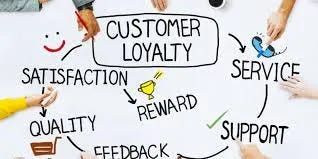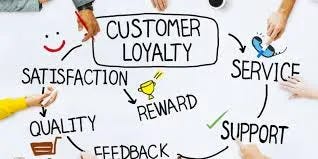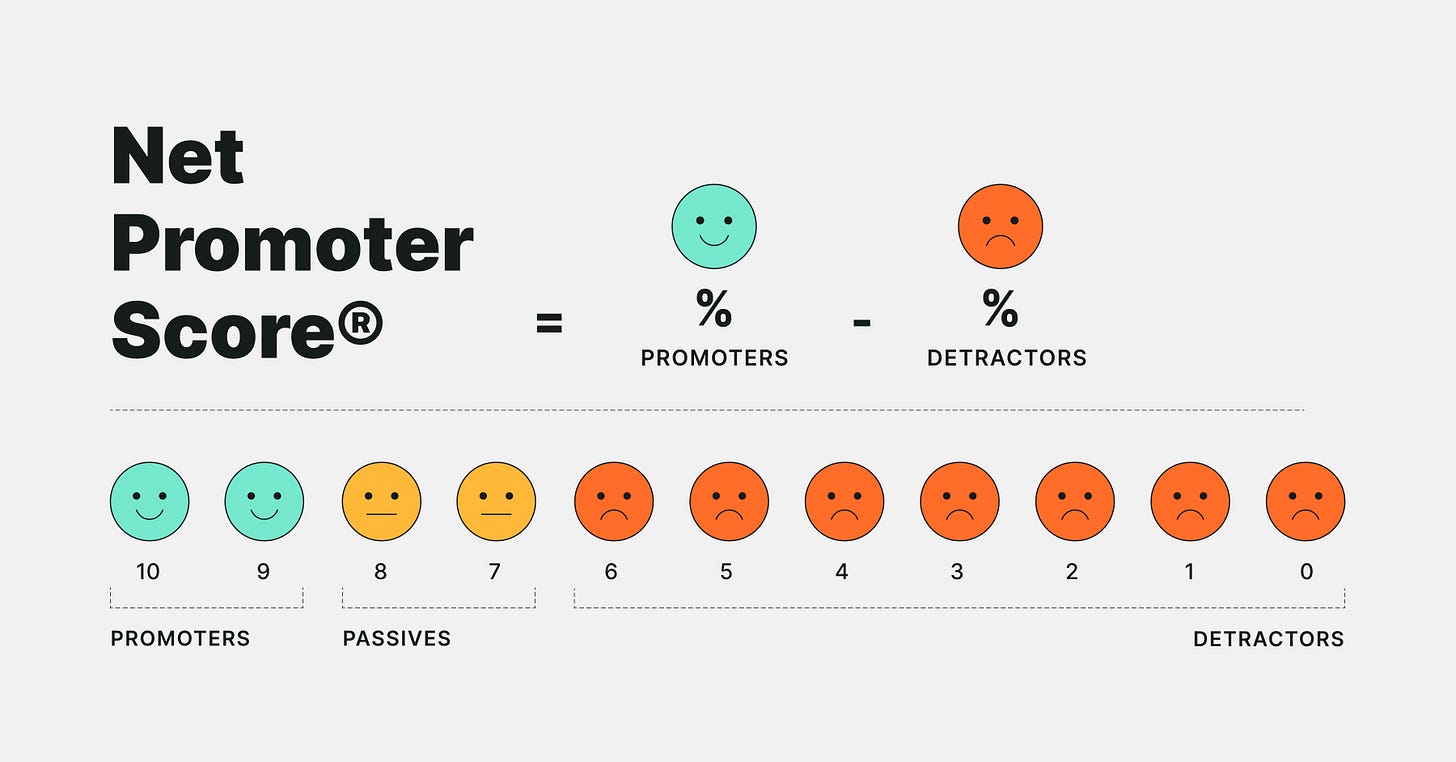Are companies measuring Customer Satisfaction correctly?
A large number of companies measure Customer Satisfaction in different ways and frequencies. But are they really measuring the right satisfaction parameters with the right tools and questions?
Customer satisfaction’s importance is a hygiene element and most companies swear by the same and measure it in different ways and means. But what are they actually measuring and are they asking the right questions?
Let us look at some examples:
You get your Voltas AC serviced from the company. Company sends you a code called satisfaction code to be given to technician on satisfactory completion of the service. Unless the code is shared and entered in the App by the technician, the complaint is not closed. Company call this NPS measurement. Technicians are paid incentive for high “NPS” scores and they swear by it.
This process is repeated across products/service categories/brands
You call customer care for repair of your Godrej product at home. This is a SOS complaint and request someone attend in 2 to 3 hours. No response from Godrej to the urgency. You get a local repair person and get it addressed as it was SOS. Next day Godrej technician calls to attend the complaint and you tell him that it is solved. The technician wants the satisfaction code sent by Godrej for closure. Once you provide the same, the customer gets a message complaint resolved “Satisfactorily”.
On orders on Zomato/Swiggy food from restaurants, the App asks for feedback on the quality/quantity of food and the delivery partner. Many times delivery partner requests you to give 5 stars and sometimes even restaurants send you a hand written message with food asking for 5 stars!
You raise a complaint with HDFC Bank on some net banking issue. After follow-up, someone from the branch addresses it with a manual request. Immediately thereafter HDFC Bank sends you a survey with 1 question - Based on the experience in this request, how likely are you to recommend HDFC Bank?
If your RM calls you once in 3 months routinely and discussions get over in 30 seconds, the bank sends you the feedback question instantly - Based on your conversation with our executive now, “how likely are you to recommend HDFC Bank?”
There was some disruption of Tata Play and you used the WhatsApp help feature to address it. On closure, Tata Play sends you question - “How likely are you to recommend Tata Play” - Yes/No
I purchase groceries at a super market/Hyper market of a big chain. After I have paid the money, the cashier asks me for “NPS” feedback on the experience today!
And the pattern repeats across products/services day in and day out. Isn’t that good? one would say, companies are “focused” on customer satisfaction!
Key Issues with the above and many more similar companies
Customer satisfaction has 3 stages

The image above depicts the different drivers of Satisfaction vs Loyalty vs Advocacy
Satisfaction - I am satisfied with the product/service/transaction… Immediate
Loyalty - This is achieved only if a customer is satisfied continuously & “additional value provided” - Longer term
Advocacy/Referral - I will recommend the brand/product to my friends/relatives as I am satisfied and am using it regularly and there is “additional value provided” - Long term
Each stage is a progression of Customer being happy to loyal to advocacy, based on “additional value” provided by the company at different stages over time. Companies need to understand the drivers of each dimension of different segments!
In the above examples of Voltas and Godrej, whether the customer is happy or not with the experience, unless he shares the “code” complaint is not closed, while ironically the company calls is “Satisfaction code”. Thus in this process the satisfaction is 100%. But is it really true?
In both these examples, there is no attempt to capture the real experience.
The technician insists for the code otherwise he cannot close the complaint
In the Godrej example, the technician did not even visit, but the customer is “Satisfied with Company service!”
The origin of this code was, prevent closure of complaint by service personnel without visiting, leading to disputes with customers. But the same activity has now descended to measure of satisfaction and payment of incentives etc.
Swiggy/Zomato ask for Restaurant/Food feedback and delivery partner feedback. But what about the core of Swiggy/Zomato - Overall experience of ordering in terms of choice of restaurants, prices charged by Swiggy/Zomato, delivery charges for even small distances, timelines for delivery, delays in allocation of delivery partner, multiple orders bundling? No feedback is requested about it. But these are the actual experiences. Is Swiggy/Zomato actually measuring “customer satisfaction”?
HDFC Bank/Tata Play/Voltas/ Super Market - They all use the term NPS for feedback collected on a Transaction.
NPS(Net Promoter Score) also used by many companies is a trademark and is designed to understand “Advocacy” of customers which is the highest stage of satisfaction. All the above companies however claim to measure NPS based on immediate transaction experience only!
Will a customer recommend a Brand/product/Service based on “an individual transaction” of a complaint or a conversation?
What about the experience of the customer in the life cycle of experiences, the determinants of loyalty/advocacy? Where is it being measured?
And is NPS to be measured as a simple Yes/No question, as very large number of companies tend to do?
Amongst the examples discussed earlier, only HDFC Bank was using the correct scale. But also making a fatal mistake of using it for “transaction feedback” and asking the same customer probably 15 to 20 times in a year!
Are any of these companies providing “additional value” (See earlier image on stages) for a customer to be their advocate?
How do some companies get it right?
Netflix
If you watch a movie on Netflix, at the end of the movie it will ask you whether you liked the movie. The purpose as they state explicitly “If you did not like the movie, they will not recommend similar movies to you in future”.
Netflix invests time and money for a detailed customer satisfaction survey, which they conduct once a year and ask whole host of questions covering all 3 dimensions of Satisfaction/Loyalty/Advocacy, correlating the responses and also related questions about competition. And since this requires time investment by customer, Netflix gives a small value coupon to the respondent for completing the survey, irrespective of your response. The value of the coupon could be equivalent of 1-2 months subscription. This shows the seriousness the company attaches to this activity.
Tata Consultancy Services
TCS executes several thousand projects annually for its customers. At various individual milestones in each project round the year, TCS collects feedback and uses it for immediate improvement to the projects.
In addition, TCS annually conducts what is used to earlier call Lifeline survey - A holistic lifecycle survey of all the experiences of the customer across projects covering more all aspects and covering all 3 dimensions of satisfaction measurement.
Many B2B Capital Goods companies
These companies know that loyalty/repeat and referrals are higher order experiences and such actions by customer necessarily include life cycle experience from proposal, product quality, price, delivering on value proposition etc. Hence the measurement of the same is done once a year only.
Additionally, when submitting a proposal for a new client, companies ask existing clients of similar size and/or Industry for a referral to be used in the proposal. When a client agrees to allow its name to be used as a referral, it is genuine “Advocacy”.
Another dimension to loyalty and advocacy - trapped
There are only 3 service providers for mobile telephony in India. If you are a Airtel customer and not happy, do you have any real option to change? You see a 5G icon on your phone network and simultaneously “No internet ” message on chrome!. Have you had this experience? I have had it several times and sent several screenshots to Airtel with no response. I continue to be “Loyal” to Airtel due to lack of genuine choices. This is an experience across product categories where the customer has limited choices and hence stays loyal to a brand because of lack of alternatives.
On a parting note: I recently received student feedback for a course. The feedback score was 4.8 out of 5. Well done the Institute said. The fine print - Out of 30 students in the class, only 5 had responded to the feedback survey!. Is the feedback 4.8/5 or 1/5 due to no response by more than 80% students? Statisticians can prove 5 out of 30 as “significant” sample.
We do hope you have enjoyed reading this issue of the Chai and Charts Chronicles. If you like it, please share the same with your friends and colleagues and if you have not liked it, please share the feedback with the writer at menghrajani1@gmail.com.
In case you have missed any of our earlier posts, you can read them by clicking here.







